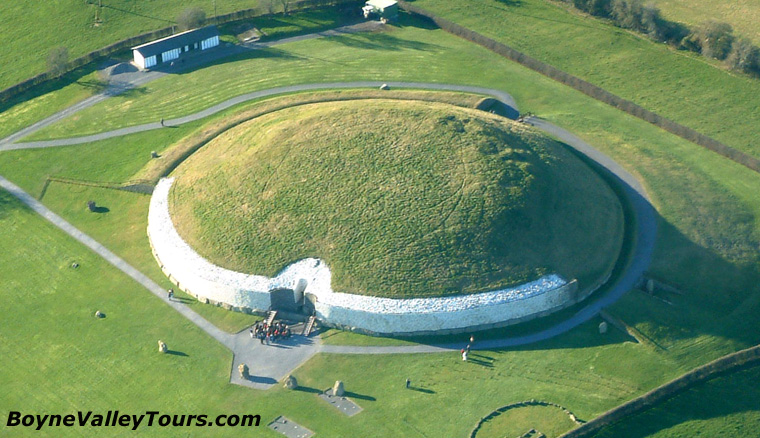Newgrange Folly

The Newgragne Folly was built in the 19th cenutry using stone from the Newgrange monument
The Newgrange folly, erected in the 19th century was built using stone from the Newgrange monument. This architectural creation, known as a folly, stands as a structure devoid of any specific function. Follies, in general, were constructed for various reasons - some served as conspicuous symbols of social status, while others were conceived as means to provide employment for impoverished locals during the challenging famine years.
Newgrange | Temple of the Ancestors
Newgrange is a Stone Age monument in the Boyne Valley, County Meath, Ireland. It was built about 3,200 BC (5,200 years ago) during the Neolithic period, which makes it older than Stonehenge and the Egyptian pyramids. Newgrange is a large circular mound with a stone passageway and chambers inside. The mound is ringed by large stones known as kerbstones some of which are engraved with artwork.
Archaeologists classified Newgrange as a passage tomb, however Newgrange is now recognised to be much more than a passage tomb. Temple of the Ancestors is a more fitting classification, a place of astrological, spiritual, religious and ceremonial importance.
The passage and chamber is aligned with the rising sun on the mornings around the winter solstice. It is the best know monument within the Brú na Bóinne complex, alongside the similar passage tomb mounds of Knowth and Dowth, and as such is a part of the Brú na Bóinne UNESCO World Heritage Site. Newgrange also shares many similarities with other passage tombs in Western Europe, such as Gavrinis in Brittany, Maeshowe in Orkney and Bryn Celli Ddu in Wales.
After its initial use, Newgrange was sealed and it remained so until the passage and chamber were rediscovered in 1699. In the 1970s, the front of the monument was reconstructed.
The Neolithic people who built the monument were farmers, growing crops and raising animals such as cattle in the area where their settlements were located; they had not yet developed metal, so all their tools would have been made out of stone, wood, antler or bone.
Book a Private Day Tour
Boyne Valley Tours Privacy, Terms and Conditions
Boyne Valley Tours Privacy, Terms and Conditions
Home
| Private Driver Tour
| Cruise Excursion
| Places
| Ireland's Ancient East
| About Us
| FAQs
| Contact
| Newgrange
| Knowth
| Hill of Tara
| Monasterboice
| Trim Castle
| Mellifont Abbey
| Slane

